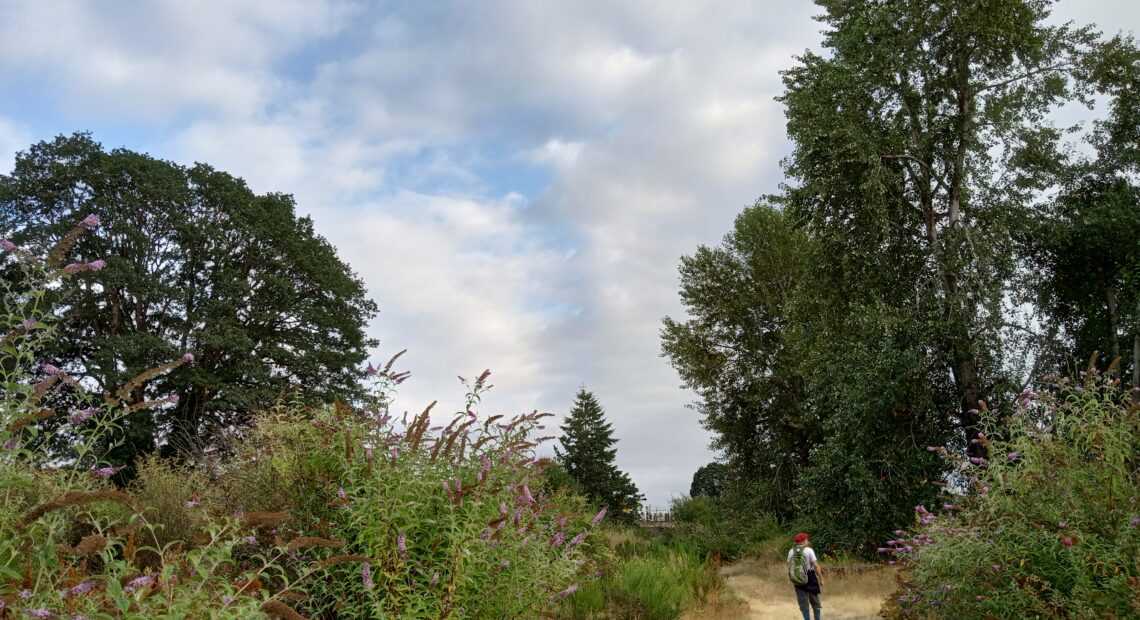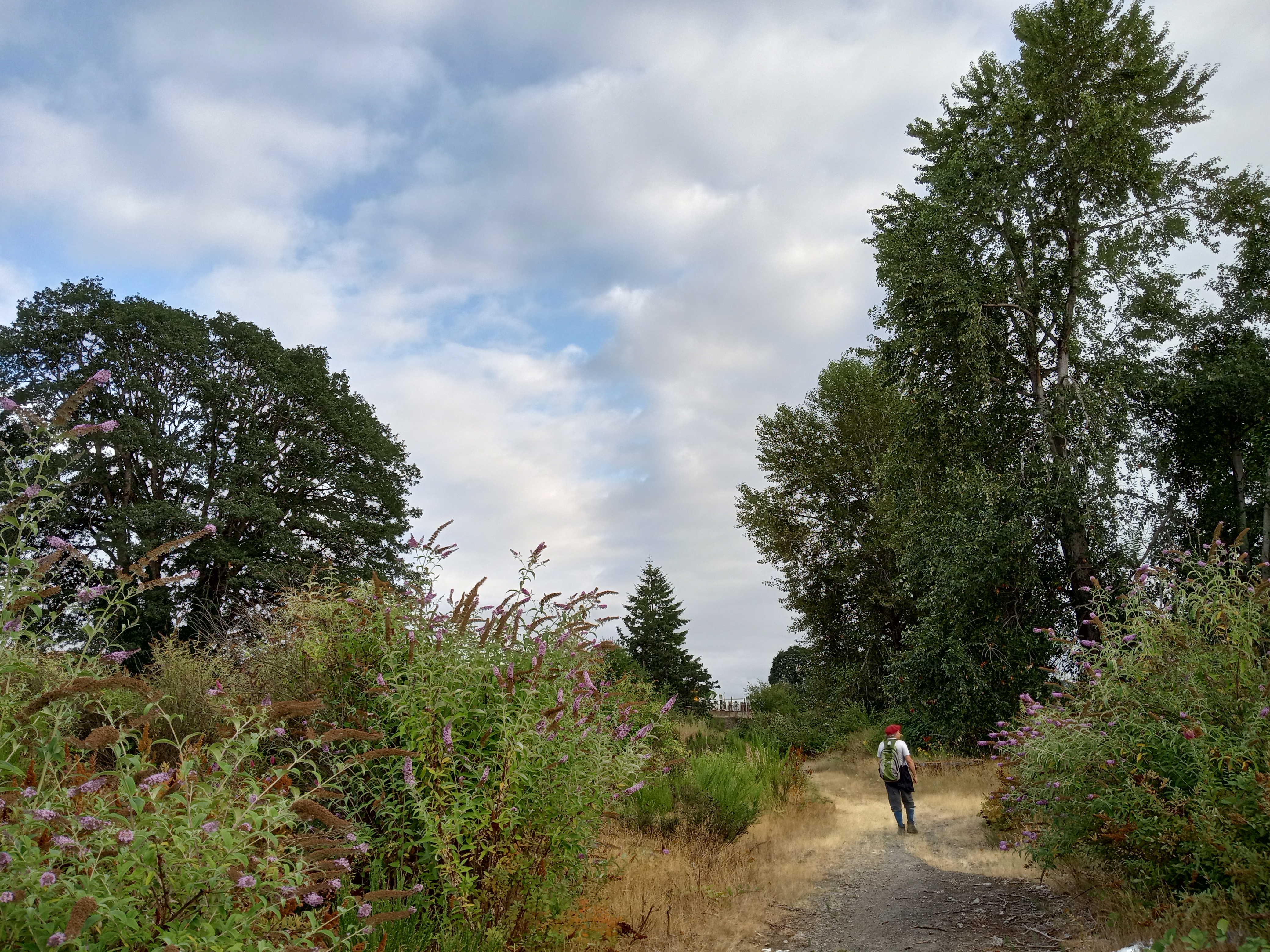
Tacoma residents appeal permit decision for Bridge Industrial warehouse
Listen
(Runtime 0:57)
Read
Two Tacoma groups have filed a joint-appeal against the city’s recent decision to issue a land-use permit for a highly controversial warehouse in South Tacoma.
The South Tacoma Neighborhood Council and 350 Tacoma, a grassroots environmental organization, filed the appeal on May 5. Earthjustice, a nonprofit, environmental law organization, is representing the groups.
“Basically, we’re saying that they didn’t have adequate information to even order the type of mitigation that was needed to offset the impacts that this project is going to have,” said Marisa Ordonia, a senior attorney with Earthjustice.
Their legal challenge asserts the city did not provide enough analysis and opportunity for public comment to issue a land-use permit.
In addition, according to Ordonia, the city did not have enough information to determine that there will not be adverse environmental impacts, if certain mitigation measures are met. This is the city’s State Environmental Policy Act (SEPA) determination of “Mitigated Determination of Nonsignificance.”
Chelsea McElroy is chair of the South Tacoma Neighborhood Council. As chair, McElroy said it was her responsibility to raise the voices of her neighbors who have been expressing concerns about this development moving forward.
The South Tacoma neighborhood is a focus area for the Tacoma-Pierce County Health Department because of historic health disparities. On average, the lifespan in South Tacoma is six years shorter than the countywide average, according to the health department.
“Think of the children, not just the children on the pretty sides of town, think of the health impacts that we’re already experiencing,” McElroy said. “Think of how much wider that gap and health disparity is going to become when we impose environmental impacts in this neighborhood specifically, and also think of the burden on these children, and how will they grow up?”
Ordonia said Earthjustice, on behalf of the appealing groups, is arguing that a project of this scope, and the potential consequences of it, necessitate more environmental review and public engagement.
Bridge Industrial, a real-estate developer, wants to develop the 2.5 million-square-foot warehouse on property formerly owned by Burlington Northern Railroad in the neighborhood. The property has been vacant for years and was a former superfund site because of industry pollution. The development would be roughly the size of 44 football fields.
The city sought public comment in February 2022, but Ordonia said that was not enough time. The city extended the comment period through April last year after residents said the month-long period was too short. Agencies submitted additional environmental studies to the permit materials after the public comment period.
“For a year after that, more studies came in, and there was no opportunity for the public to weigh in on their concerns and hear about what was going to be done to address those concerns,” Ordonia said.
There’s a myriad of environmental impacts residents foresee that have them concerned about the health and wellbeing of the natural ecosystem and humans. The development could add roughly 5,000 weekday daily vehicle trips to the area, although some estimate more, which could mean added diesel pollution. The site has a stream that will have to be moved and wetlands whose existing buffer will be changed.
It’s not just South Tacoma residents that are concerned about the development. University Place resident, Katy Parrish, fears the impacts could ripple out from the site.
An aquifer on the site is designated as an emergency water source for the city, and Parrish, a Tacoma water customer, said she worries about what would happen if this water source is paved over. She is worried that an atmospheric river event, where a plume of moisture causes massive amounts of precipitation, could cause water runoff into a creek near her home. She said the tire particulates from the warehouse development could end up impacting salmon in the creek.
“I’ve got concern about being a water customer, not having enough during a drought, and then dirty water ending up in a protected salmon creek,” Parrish said.
Parrish is concerned about the increased traffic and how the development could add to the urban heat island effect in the area.
“I think, at a minimum, I want to see health and environmental assessments completed,” Parrish said. “In dream of all dreams, I’d like to see the project go away and be moved to another area.”
The Tacoma hearing examiner will decide the appeal case. The groups are asking for the hearing examiner to reverse the city’s SEPA determination and issuance of the land-use permit. Also, the groups want the examiner to order the city to conduct a full review of the project’s environmental and health impacts. Specifically, they want an environmental impact statement (EIS) and health impact assessment (HIA) for the project, which the city has denied needing to do.
“I think that the community deserves to know what types of impacts this project is going to have,” Ordonia said. “If the project applicant and the city think that this is a good project for the people that live in the area, that it’s not going to have any harms, that they can demonstrate that through a Health Impact Assessment and an Environmental Impact Statement.”
Experts require an EIS when they decide a project could have significant impacts to the human environment. It would include an analysis of impacts, as well as alternatives.
An HIA would evaluate public health consequences of the proposed development and provide recommendations on how to lessen negative health effects and maximize positive ones. The Washington State Department of Health and the Tacoma-Pierce County Health Department urged the city to undergo an HIA last year.
“When I found out more about the health impacts, I wanted to hear from the city,” McElroy said. “I’m not a trained scientist, and I don’t know these things. If you have it, we want it, and I think then as residents we can make more informed decisions if we’re involved in the process or we’re being communicated to.”
Furthermore, the neighborhood has long been saddled with environmental and health burdens. The community was formerly redlined, where people of color were denied home loans in specific areas and relegated to areas of the city that may have had more industry, pollutants and developments. This created a cycle of inequality where fewer investments were made in those areas, and health and quality of life outcomes were lower.
“There’s just been a lot of environmental impacts: the cleanliness, the air pollution, all types of things that can just impact one specific neighborhood,” said McElroy. “And I feel that we’ve kind of become this dumping ground for blight in the city.”
Tacoma tracks equity in its different neighborhoods through the Equity Index. The neighborhoods surrounding the property where the development would go have low and very low equity index scores, with a high number of people living near heavily trafficked roads, high diesel emissions yearly and a lower life expectancy rating than the city’s average.
From an environmental justice standpoint, Ordonia said the communities that have had to historically bear the burden of pollution that comes with development shouldn’t have to continue to bear those burdens.
“At the very minimum what we’re asking here is to just know what those impacts are going to be and have their voices heard,” Ordonia said.
The neighborhood where the proposed development would go has more residents of color than 80-95% of neighborhoods in Washington state, according to Earthjustice. Ordonia said the groups want to demonstrate these projects keep getting built in communities of color and low-income communities.
“When you speak with folks in these communities, some of them will use the term ‘sacrifice zone,’ that you have dumped on us in the past and you want to keep dumping on us, and you don’t want to be accountable for that,” Ordonia said.
McElroy wants, at a minimum, more transparency from the city on these planning decisions.
“I worry that this project is going to push through, full steam ahead, even though we are raising our voices,” McElroy said.
According to a statement from a Tacoma spokesperson, “the city will not comment or provide information about the appeal while the matter is pending.”
















